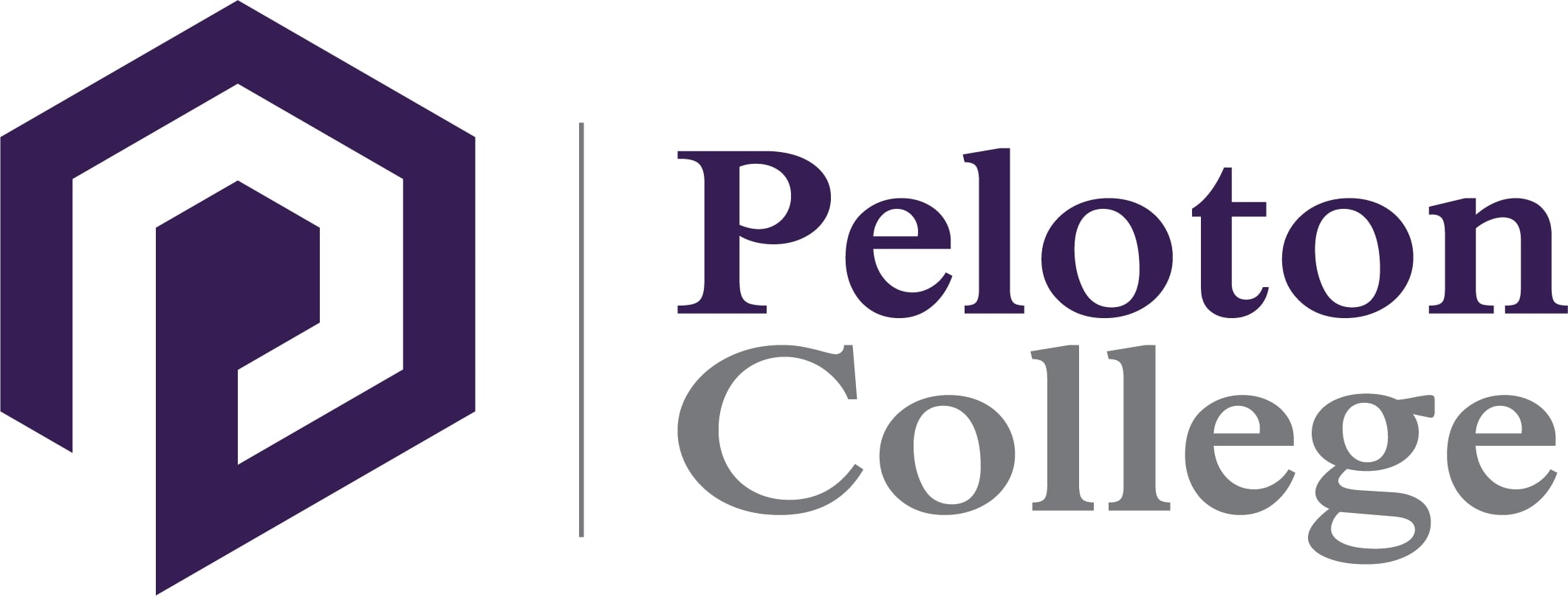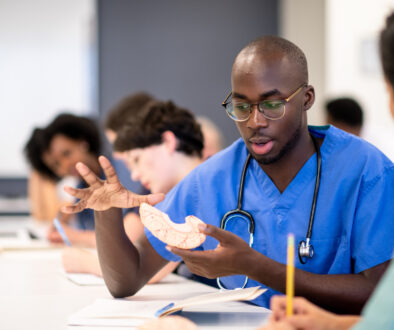Why Does a Medical Biller Need to Know Anatomy and Physiology?

Medical billers have no clinical responsibilities, so why must students learn about anatomy and physiology to get a diploma? It’s because both anatomy and physiology play a surprisingly crucial role in what they do.
What Does a Medical Biller Do?
Medical billing and coding specialists manage health insurance claims for doctors and hospitals. Their primary responsibilities include:
Transcribing Data into Billing Codes
Insurers pay most healthcare bills in America; they need large volumes of information to process claims. Medical billing and coding specialists streamline the process by translating medical data into alphanumeric codes that serve as shorthand, describing every symptom, condition and treatment known to medicine. Medical billers research charts, gather data and fill out claim forms using the required codes.
Troubleshooting Rejected Claims
A handful of insurance claims are initially denied because of coding errors or missing data. But the revenue is critical to keep healthcare facilities running, so medical billing specialists review rejected claims daily, working directly with the insurer to ensure quick reimbursement.
Medical billers also participate in the financial management of medical offices, tackling tasks from light accounting to compiling financial reports.
Why Does a Medical Biller Need to Learn Anatomy and Physiology?
Medical billers don’t make clinical decisions, yet everything they do requires an understanding of how the body is made and how it works. Without an anatomy and physiology course, reading through charts to identify the health information necessary to fill out insurance claims properly would be impossible.
For example, only by knowing anatomy and physiology can a medical billing specialist know that a diagnosis of “PNA” in relation to cough and infiltrates on a chest x-ray means the patient has pneumonia.
A diagnosis of pneumonia may also support other treatments coded on the same form, so medical billers may have to look even further to determine, for example, if the infection is viral or bacterial. Only by knowing more about lung conditions will the medical biller recognize that pneumococcal pneumonia is bacterial. If it’s improperly classified as viral, the insurance company may resist paying for IV antibiotics, denying payment until the treatment is proven to be medically necessary.
What Type of Anatomy Do Medical Billers Need to Learn?
Medical billers don’t need in-depth anatomy and physiology courses like doctors and nurses do because they don’t use the information to make life and death decisions. The course is solely to help medical billing specialists find their way around a chart by covering the 14 body systems and associated conditions. Students learn about the:
Cardiovascular System
The cardiovascular system is comprised of the heart and blood vessels. The heart serves as a pump, supporting the flow of blood through the body as it delivers nutrients to cells, facilitates gas exchange, and removes metabolic waste products.
Knowledge of the cardiovascular system helps medical billers code conditions, diagnostics and treatments from heart attacks and pacemakers to the electrocardiograms that diagnose arrhythmias.
Digestive System
The digestive system breaks down food, so the body can convert it into energy. A single tract divided into sections by function, it includes the mouth, esophagus, stomach, and intestinal tract.
Common conditions and procedures involving the digestive tract include gastroesophageal reflux disease (GERD), colon cancer, gastric bypass surgery and colonoscopies.
Endocrine System
The endocrine system regulates metabolism through glands that release hormones. Examples include the hypothalamus, thyroid and adrenal glands and part of the pancreas. Associated disorders include hypothyroidism, and thyroid hormone deficiency and diabetes.
Immune System
The immune system’s only role is to protect the body from pathogens. It includes organs and tissue such as the thymus gland, spleen, lymph nodes and appendix.
Associated with disorders that affect nearly every body system, the study of the immune system expands on a medical biller’s knowledge base and helps with the coding of conditions such as bacterial endocarditis, lymphoma and Crohn’s disease.
Integumentary System
More than just the skin, the Integumentary system consists of the hair, nails, and sweat glands. Its purpose is to shield the body from UV light, retain moisture, regulate body temperature, and protect the fingers and toes from injury.
Because the skin is affected by many other disorders, medical billers in all settings should be especially familiar with Integumentary disorders.
Musculoskeletal System
The musculoskeletal system consists of bones, muscles and the connective tissue that holds them together. It controls movement and supports posture.
Disorders of the musculoskeletal system are among the most common and include strain and sprains, bone fractures and lumbago, low back pain that nearly all Americans have at some point in their lives.
Medical billers employed in orthopedic practices or in hospitals that perform joint replacement surgeries should be experts in musculoskeletal system codes.
Excretory System
The excretory system consists of the kidneys, bladder, and associated structures. Their job is to remove liquid waste from the body while preserving fluids. Medical billers working in hospitals, urology practices and dialysis centers will find this information particularly useful.
Respiratory System
The body needs oxygen to survive. The respiratory system, consisting of the trachea and lungs, is responsible for inhaling oxygen and expelling carbon dioxide gas.
Medical billers will not only learn about lung disorders, but also cardiac and infectious conditions that affect breathing, such as pneumonia and heart failure.
Nervous System
The nervous system coordinates the body’s responses to internal and external stimuli. The central nervous system includes the brain and spinal cord. The peripheral nervous system consists of the nerve fibers that carry sensory impulses to the brain and motor impulses to the muscles.
Since nerves are a part of every other system, medical billers outside of a neurology practice will frequently code nervous system disorders.
Reproductive System
The human reproductive system ensures our species lives on. Medical billers working in obstetrics and fertility clinics code reproductive disorders and treatments related to conception and birth.
Why Is Physiology Important for Medical Billers?
Anatomy is how the body is made, but physiology is how it works. From the cellular to the organ level, humans are complex biochemical and electrical machines. Did you know that billions of chemical reactions occur in the body every second? Or that cells have a voltage?
The heart, for example, requires electrical impulses to coordinate beats, while the gut depends on a delicate balance of beneficial bacteria for digestion. Anatomy and physiology are different studies, yet they’re inseparable. Medical billers code for as many physiological as anatomical disorders.
What’s an Easy Way to Learn Anatomy and Physiology?
The simplest way to get the education you need to become a medical biller is to enroll in a vocational school program. The curriculum not only includes anatomy and physiology, but also complementary courses that help bring it all together, such as:
Medical Terminology
The medical terminology course prepares medical billers for the anatomy and physiology class. Students are familiarized with how to decipher complex terms by breaking them down into easy-to-understand parts. Without some exposure to medical jargon, anatomy and physiology would be challenging to understand.
Health Information Technology
Health records are now stored in computers instead of filing cabinets, so students in a medical billing program learn how to retrieve, update and share health data.
Using the knowledge gained in the anatomy and physiology course, they practice researching charts filling out practice claims on software similar to what they’ll use on the job. Other topics include fraud detection, auditing, patient privacy and archiving records.
Medical Coding Systems
There are three types of medical codes, each with a unique purpose. ICD-10 codes are primarily used to describe symptoms and conditions warranting treatment. CPT codes pertain to diagnostic and surgical procedures. Developed by the American Medical Association, they’re used for billing and evaluating treatment outcomes. HCPCS codes are used for products and services that are difficult to categorize, such as chemotherapy, ambulance transportation and durable medical equipment.
Once students have a firm grasp of anatomy and physiology, they can search each volume for the proper codes.
Billing Procedures
During the billing procedures class is when your hard work in anatomy and physiology pays off. Topics include the healthcare revenue cycle, public and private insurance plans, and patient’s rights. Here, your knowledge of anatomy and physiology will shine, bringing your education full circle as you prepare for your new career.
Final Thoughts
Medical billing and coding specialists aren’t thought of as frontline heroes, but they should be. Without them, healthcare providers wouldn’t get the money they need to keep the lights on. If you have an aptitude for research and the desire to help others, don’t let not knowing anatomy and physiology prevent you from pursuing a medical billing career. Vocational school programs prepare you to excel in this rewarding career.
Want to Learn More?
The Medical Billing and Coding training program at Peloton College provides students vital knowledge in Medical Terminology and Understanding Health Insurance Claims and prepares students to be able to work with and maintain electronic health record systems in the health care industry. Graduates of this Medical Billing and Coding training program will also be eligible to sit for the Certified Electronic Health Records Specialist (CEHRS) Certification or the Certified Billing and Coding Specialist (CBCS) Certification.
The mission of Peloton College is to be the premier provider of hands-on training and education by providing students and graduates with the necessary skills to secure occupational careers. Contact us today to learn more.



